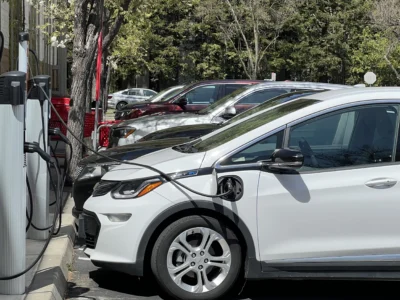Conditional Spending and the Clean Air Act
Ann suggests that Chief Justice Roberts’ opinion today in Sebelius might open up the Clean Air Act to new challenges. That seems right, but it also seems to me that there are two key differences between Medicaid and the CAA/Highway Spending nexus.
1) Medicaid is an entitlement program; in other words, federal money flows more or less automatically. It does not require Congress to appropriate money annually. Thus, it may make sense in the Medicaid context to suggest that states are subject to an unconstitutional bait-and-switch. They have relied literally for decades on federal Medicaid money, so to say now, “You have to expand this program or lose funds that you have had a legal entitlement to for decades based on certain conditions” seems coercive.
Federal highway spending, however, is not an entitlement. Although a federal transportation bill lasts for several years (and is currently being negotiated in conference committee), its appropriations are annual. So states have less of an argument that their settled expectations are being disrupted. They have to do this every year. They are used to it, and always are on the alert for annual appropriations riders — not a factor with Medicaid.
Is this a distinction without a difference? That’s hard to say, because Chief Justice Roberts’ opinion is woefully undertheorized. There is, however, a precedent for the distinction: Goldberg v. Kelly, the 1970 case that held that AFDC benefits constituted “property” within the meaning of the Due Process Clause, and thus an AFDC recipient had a right to a hearing before they were cut off. Central to Goldberg was the notion that AFDC was an entitlement, and thus it generated reasonable expectations under recipients.
Now, Goldberg‘s notion of an entitlement is somewhat different than here, but it is not really different than the normal sort of analogical reasoning traditional used by courts. Moreover, the terseness of the Chief Justice’s opinion pretty much requires this.
2) Central to the Chief Justice’s reasoning in Sebelius was the huge impact that a cutoff of Medicaid funds would have on state budgets (analogous, it should be said, to the Goldberg court’s reference to “brutal need”). He cites statistics showing that close to 20% of state budgets are Medicaid costs, and 50 to 83 percent of those costs are federal monies. In contrast, the monies are issue in South Dakota v. Dole were far lower — less than 1% of state budgets.
Offhand, I do not know the percentage of state budgets that involve highway construction and maintenance, and what percentage of those come from federal funds. But I would be very surprised to see that they are anywhere close to Medicaid. Here in California, half of the state’s budget is K-12 education, then Medicaid, then prisons. Everything else pales in comparison. So based on the logic of the Chief Justice’s opinion, for the federal government to threaten to withdraw funds from highway projects seems much closer to Dole than Medicaid.
This is all very preliminary, of course. And have no fear: oceans of ink will be spilled on this stuff. My suspicion is that a lot of the analysis of the Chief’s opinion on this will also arise under the notion of “unconstitutional conditions,” which is a notoriously sticky area of constitutional law. But at first blush, it appears that federal highway funding and the Clean Air Act is easily distinguishable by any court that wishes to do so. Whether the Chief Justice would wish to do, of course, is entirely another matter.








Reader Comments